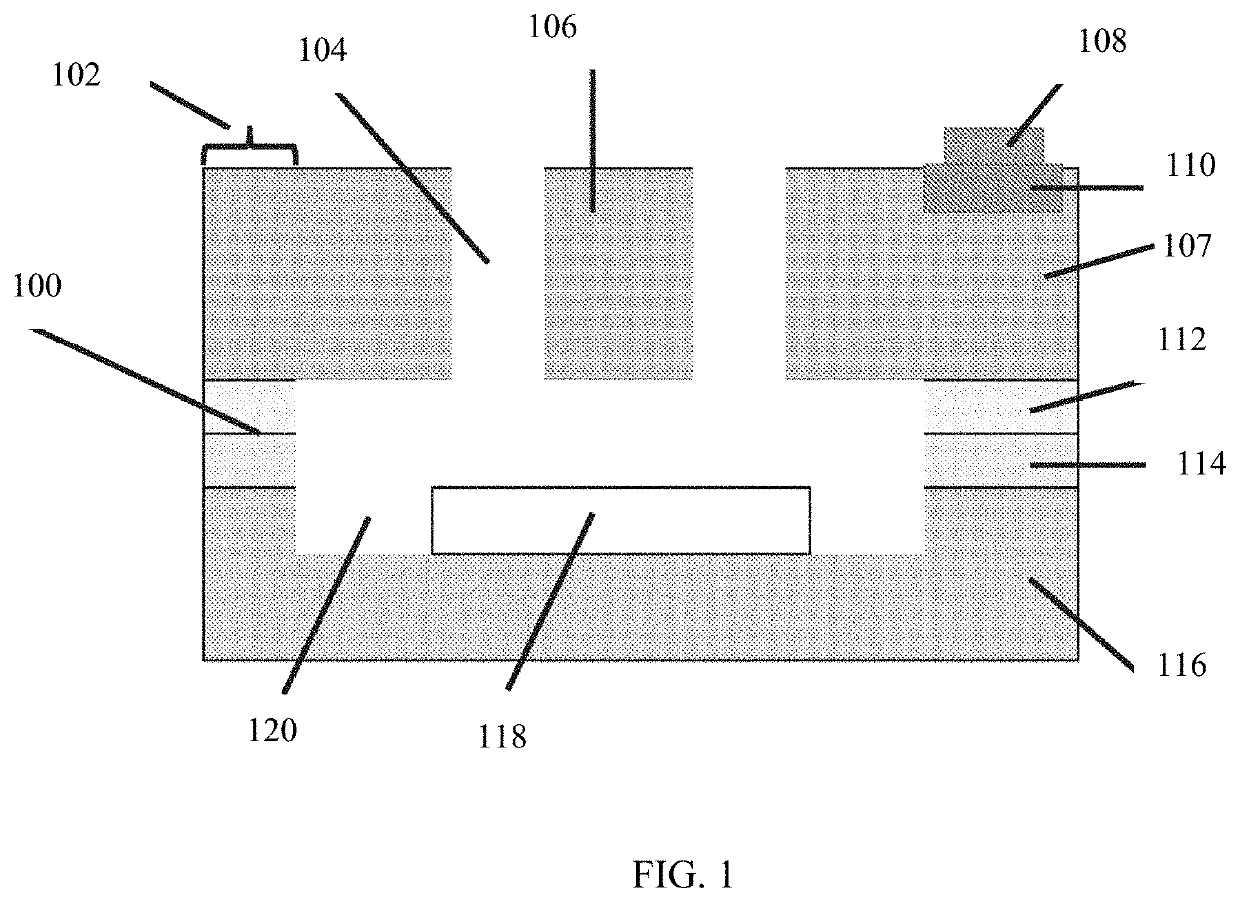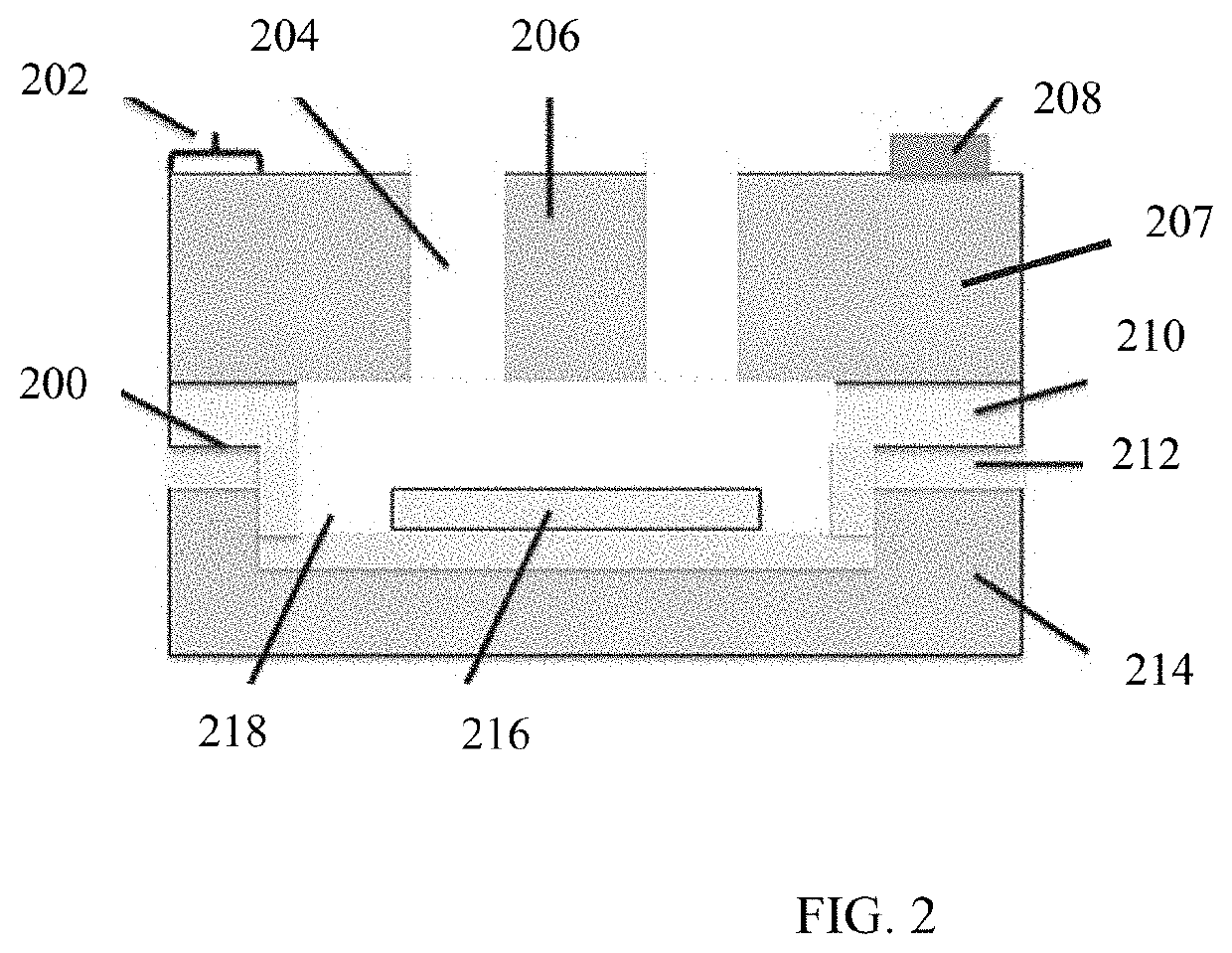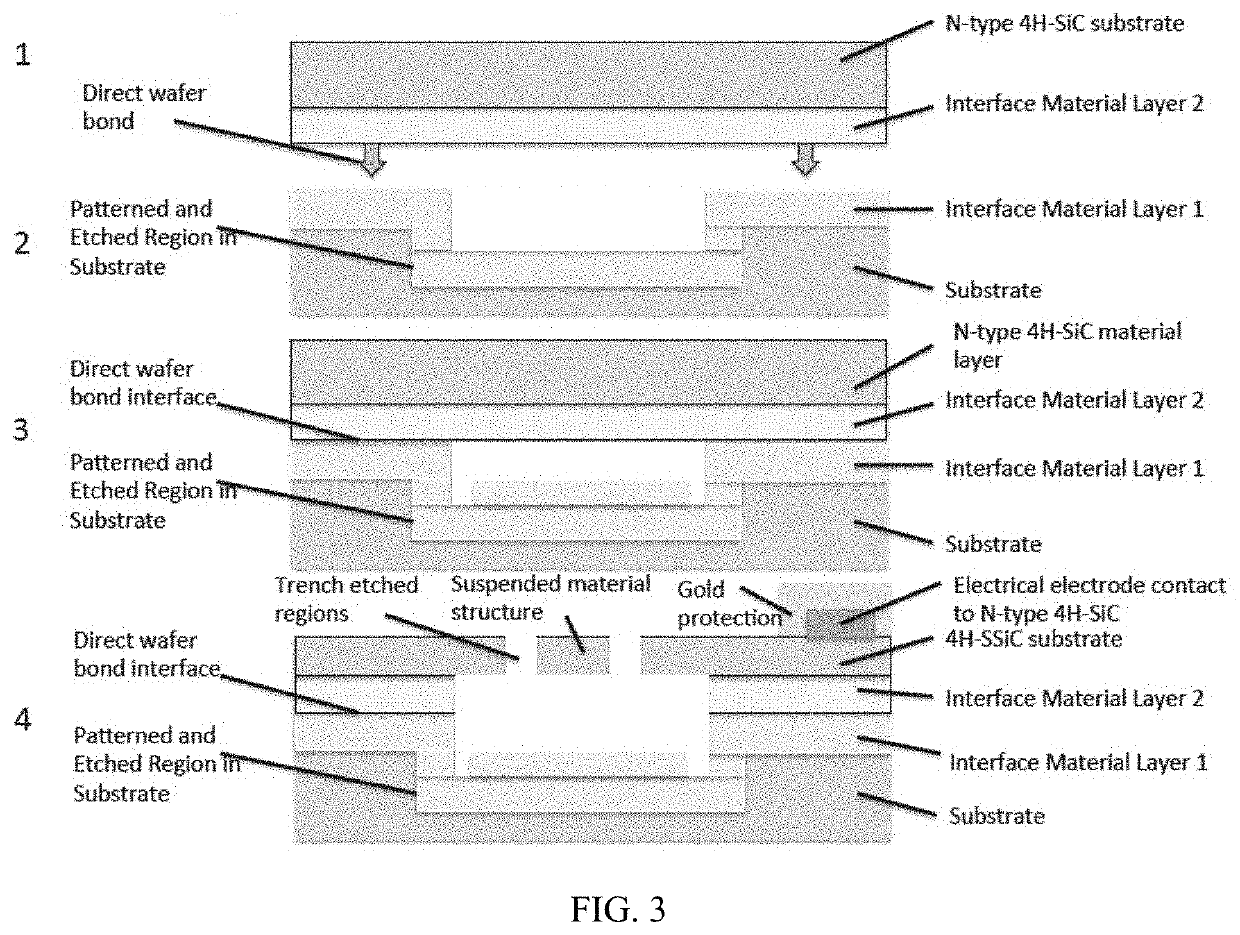Silicon carbide structure, device, and method
a technology of silicon carbide and mems, which is applied in the direction of microstructural devices, microstructures, coatings, etc., can solve the problems of high surface roughness, high residual stress of 3c-sic material layers grown on silicon substrates, and high dislocation density, so as to facilitate the formation of movable suspended material structures, high thermal conductivity, and high thermal conductivity
- Summary
- Abstract
- Description
- Claims
- Application Information
AI Technical Summary
Benefits of technology
Problems solved by technology
Method used
Image
Examples
example device embodiment 1
[0074]In one embodiment, one or more than one suspended material structures comprise a hexagonal single-crystal SiC material having a first surface and a second surface with each suspended material structure attached (fixed) to one or more than one anchor material structures that are bonded to a substrate with no interface material layer, one optional interface material layer or more than one optional interface material layers at the interface between the hexagonal single-crystal SiC material layer and the substrate. The anchor material structure comprises hexagonal single-crystal hexagonal SiC material. The anchor material structure and the suspended material structure are formed from a single-crystal hexagonal SiC material and the anchor material structure is bonded (attached) to the substrate and the suspended material structure is not attached to the substrate. The substrate may be a hexagonal single-crystal SiC substrate which may be conductive with N-type doping, conductive wi...
example device embodiment 2
[0120]In another embodiment, this invention provides one or more than one suspended material structure(s) that comprise hexagonal single-crystal SiC material having a first surface and a second surface with each suspended material structure attached (fixed) to one or more than one anchor material structures that are bonded to a first substrate with no interface material layer, one optional interface material layer or more than one optional interface material layers at the interface between the hexagonal single-crystal SiC material layer and the first substrate. The anchor material structure comprise hexagonal single-crystal hexagonal SiC material. The anchor material structure and the suspended material structure may be formed from a single-crystal hexagonal SiC material and the anchor material structure is bonded (attached) to the first substrate and the suspended material structure is not attached to the first substrate. The substrate may be a single crystal SiC substrate.
[0121]Th...
PUM
| Property | Measurement | Unit |
|---|---|---|
| thickness | aaaaa | aaaaa |
| thickness | aaaaa | aaaaa |
| thickness | aaaaa | aaaaa |
Abstract
Description
Claims
Application Information
 Login to View More
Login to View More - R&D
- Intellectual Property
- Life Sciences
- Materials
- Tech Scout
- Unparalleled Data Quality
- Higher Quality Content
- 60% Fewer Hallucinations
Browse by: Latest US Patents, China's latest patents, Technical Efficacy Thesaurus, Application Domain, Technology Topic, Popular Technical Reports.
© 2025 PatSnap. All rights reserved.Legal|Privacy policy|Modern Slavery Act Transparency Statement|Sitemap|About US| Contact US: help@patsnap.com



